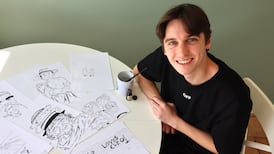More than €100 million in previously-anticipated pay savings in the health service this year are not achievable, Minister for Health
James Reilly
has said.
He said it was a matter for the whole of Government to determine where this money would come from.
The HSE's service plan for the year was based on €290 million in savings being delivered under the Haddington Road agreement, as well as a further €108 million in pay savings.
Consultancy report
The Irish Times reported last month that a consultancy report commissioned by the health service had forecast that the Haddington Road deal may only produce €212 million in savings, plus or minus 20 per cent.
Dr Reilly said the €290 million target could be achieved at a stretch.
Proposed measures set out in a new HSE plan aimed at bridging the gap between the €212 million figure and €290 million target, such as changing skill mixes, were at the heart of the row between nurses and health management over the weekend.
Speaking yesterday, the Minister said the €108 million in savings which was set out in the health budget for the year was not achievable.
The consultancy report had shown the savings were “not available in the manner originally perceived”.
He said this was now a matter for negotiations between the Department of Health, the Department of the Taoiseach and the Department of Public Expenditure and Reform.
Separately, the Minister accused the country’s main nursing union of leaving itself open to the charge of “scaremongering” in its claim that patient safety would be put at risk in the move to alter the ratio between nurses and healthcare assistants. He said the changes had been agreed under the savings attached to Haddington Road.
The Minister also stressed he wanted to put to bed the idea that the model of care could not change, saying "the model of care has to change".
Standards
This country was a long way off the London Royal College of Nursing advice on standards of one nurse per 2½ health care assistants in community service units, he said in Kenmare Co Kerry, where he opened a primary care centre which brings the town's eight GPs and other practitioners under one roof.
Dr Reilly said in some big teaching hospitals in Ireland there were nine nurses to one health care assistant. In some other countries the ratio was 2.8 nurses per health care assistant.
“I want the patient looked at in the lowest level of complexity that is safe, timely and efficient and as near to home as possible,” he said.
"We don't want doctors looking after patients nurses could be looking after; we don't want nurses looking after patients that health care assistants could be looking after."
Expensive
There had to be an end to "inappropriate use of very expensive time".
He said the expanded role for nurses in taking over colonoscopy examinations and such from doctors and managing patient care as practice nurses, meant they too had to give a little bit.










